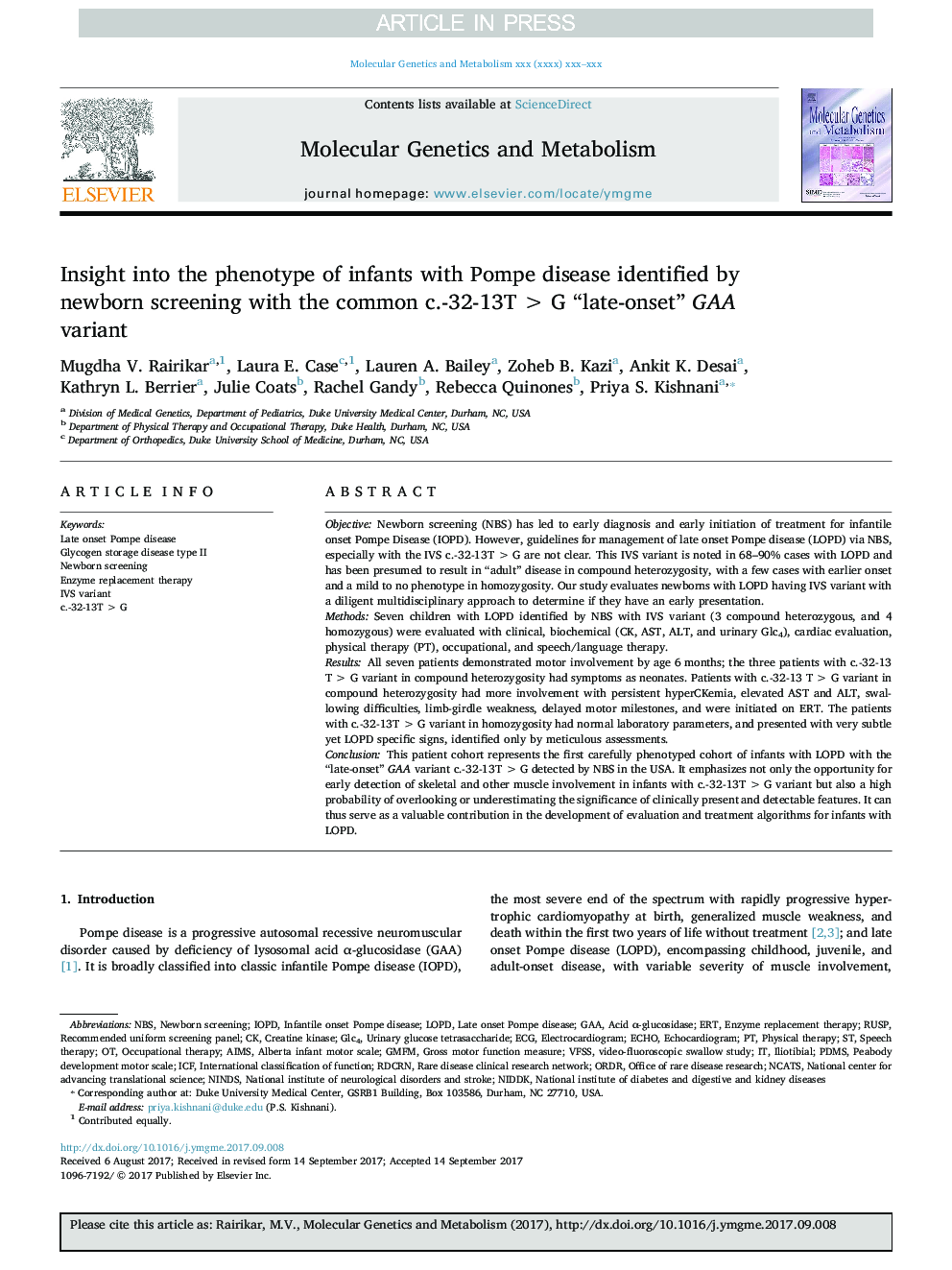| Article ID | Journal | Published Year | Pages | File Type |
|---|---|---|---|---|
| 8343679 | Molecular Genetics and Metabolism | 2017 | 9 Pages |
Abstract
This patient cohort represents the first carefully phenotyped cohort of infants with LOPD with the “late-onset” GAA variant c.-32-13TÂ >Â G detected by NBS in the USA. It emphasizes not only the opportunity for early detection of skeletal and other muscle involvement in infants with c.-32-13TÂ >Â G variant but also a high probability of overlooking or underestimating the significance of clinically present and detectable features. It can thus serve as a valuable contribution in the development of evaluation and treatment algorithms for infants with LOPD.
Keywords
RDCRNGMFMNIDDKGlc4Late onset Pompe diseaseNCATSVFSSRecommended Uniform Screening PanelRUSPIOPDECHOICFPDMSLOPDGAANBSAlberta Infant Motor Scaleenzyme replacement therapyAcid α-glucosidaseelectrocardiogramECGGross motor function measureAIMSechocardiogramphysical therapyNINDSNewborn screeningNational Institute of Neurological Disorders and StrokeNational Institute of Diabetes and Digestive and Kidney DiseasesGlycogen storage disease type IIERToccupational therapyCreatine kinaseSpeech therapy
Related Topics
Life Sciences
Biochemistry, Genetics and Molecular Biology
Biochemistry
Authors
Mugdha V. Rairikar, Laura E. Case, Lauren A. Bailey, Zoheb B. Kazi, Ankit K. Desai, Kathryn L. Berrier, Julie Coats, Rachel Gandy, Rebecca Quinones, Priya S. Kishnani,
